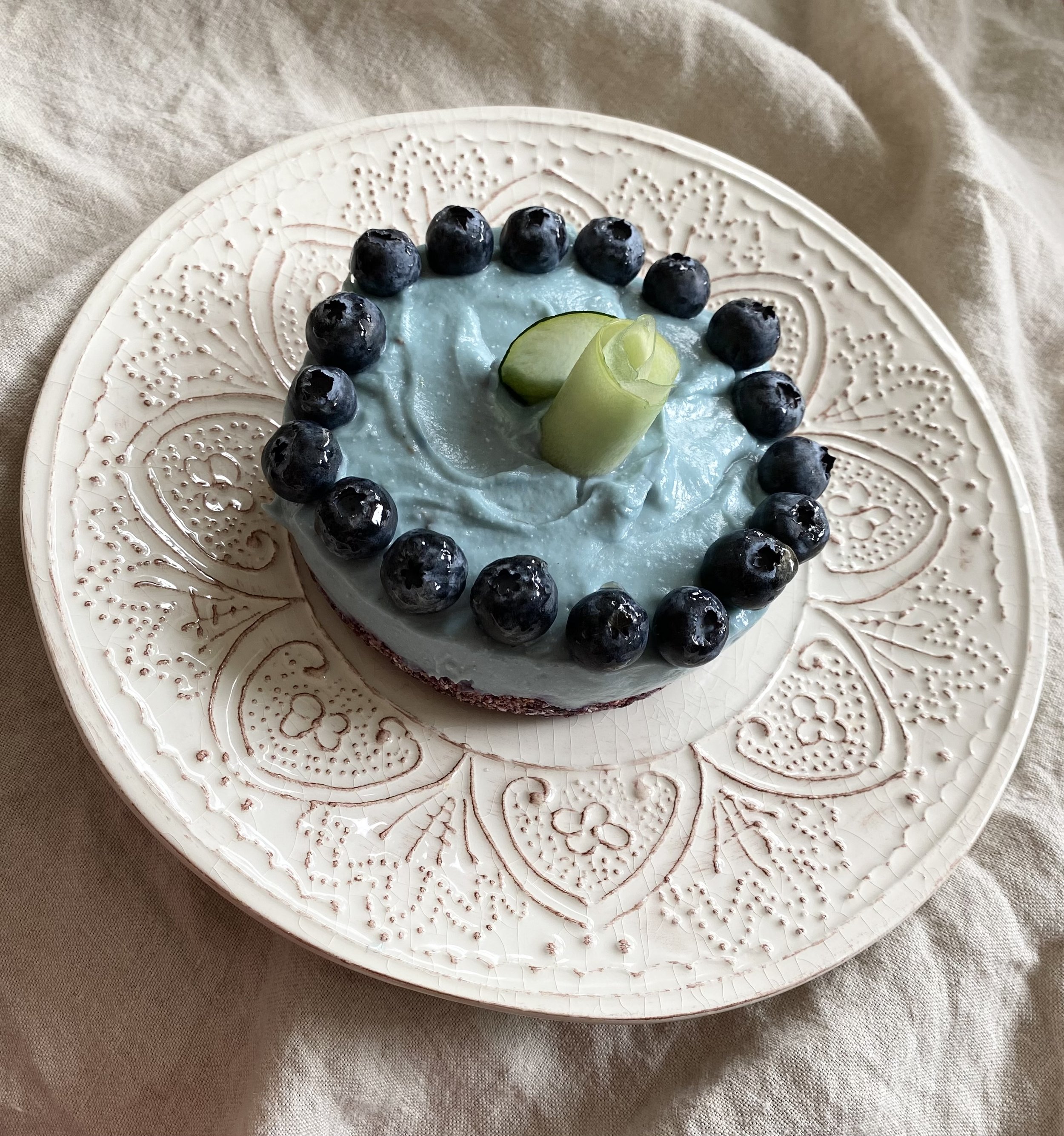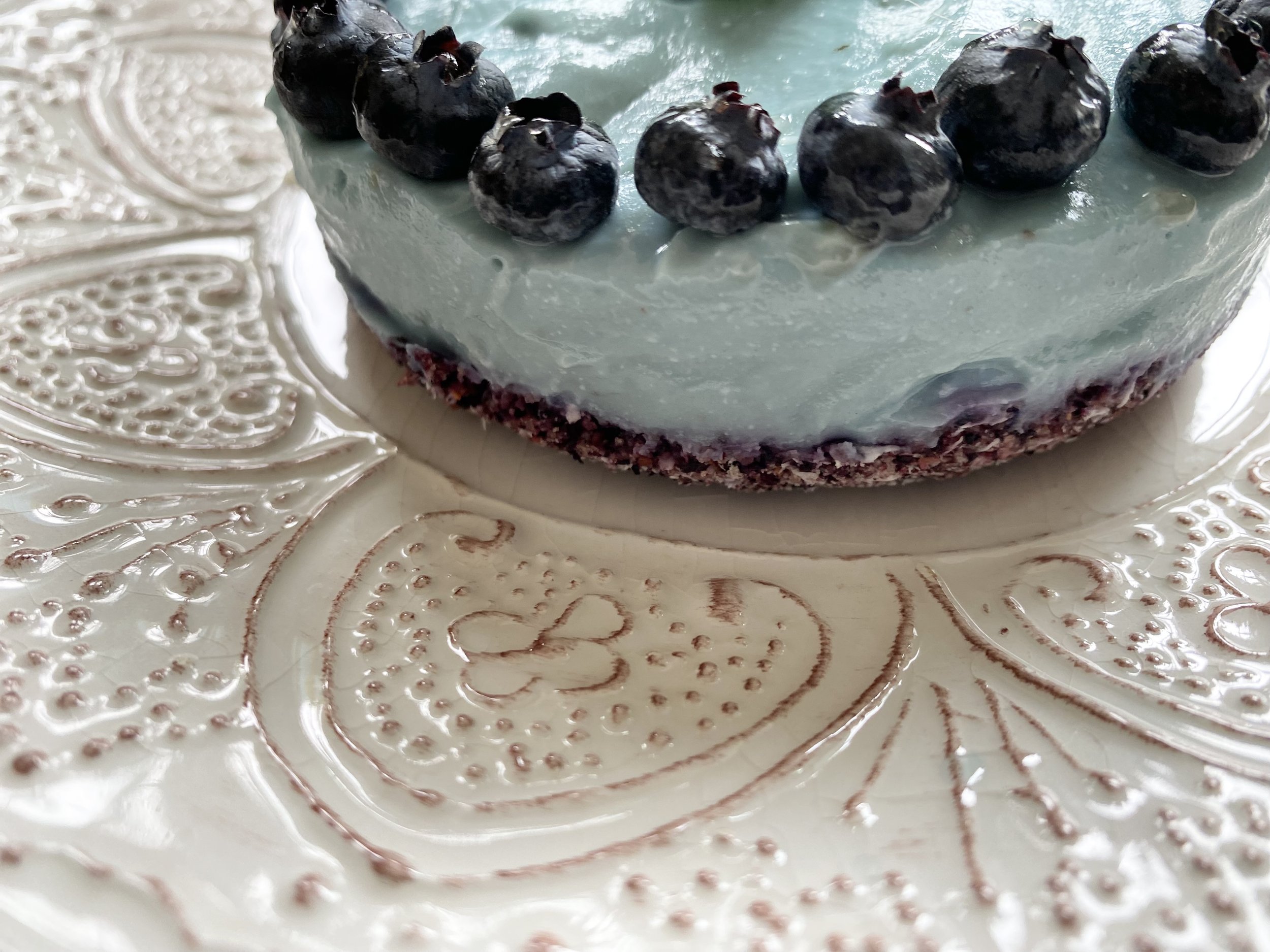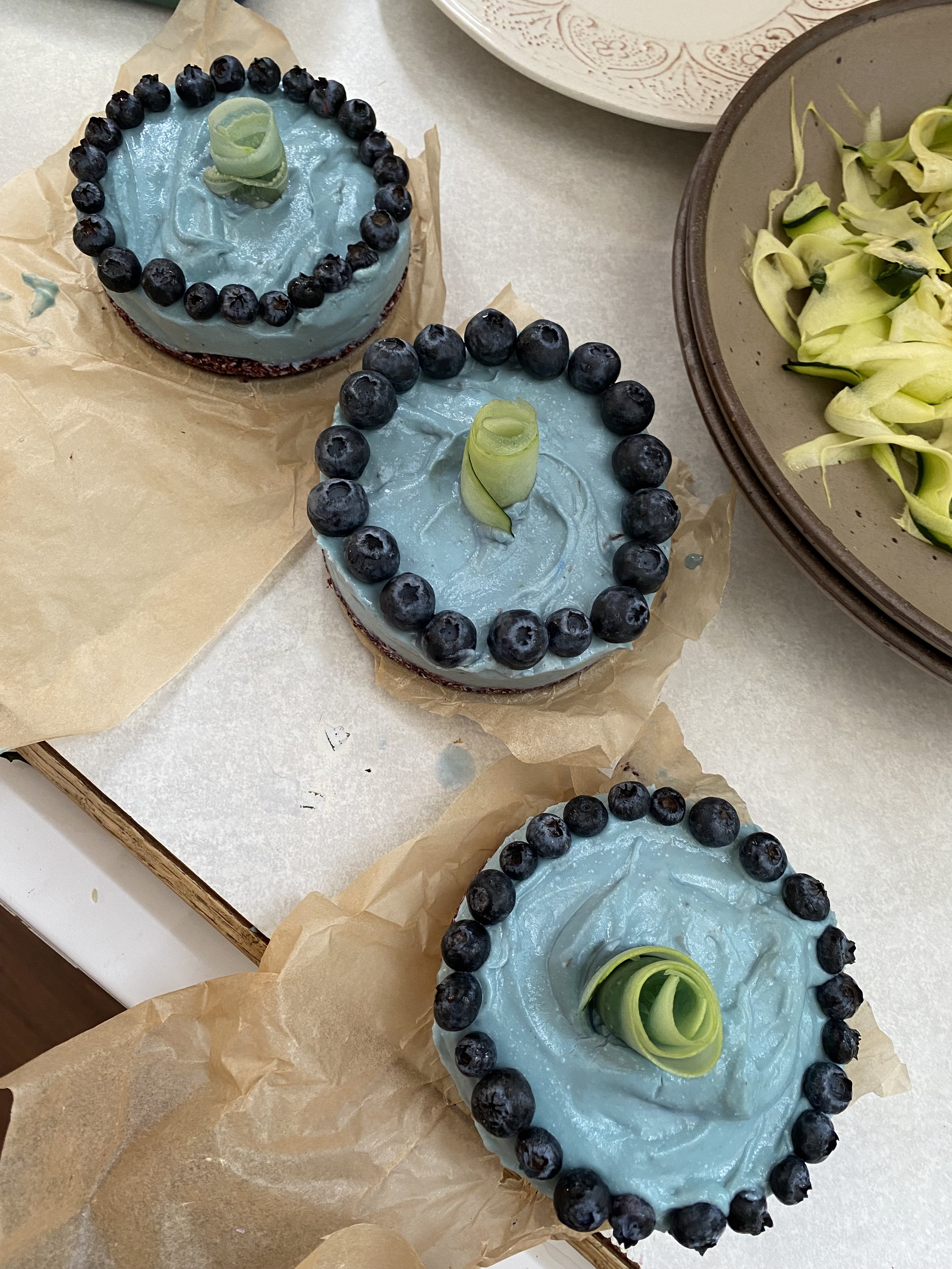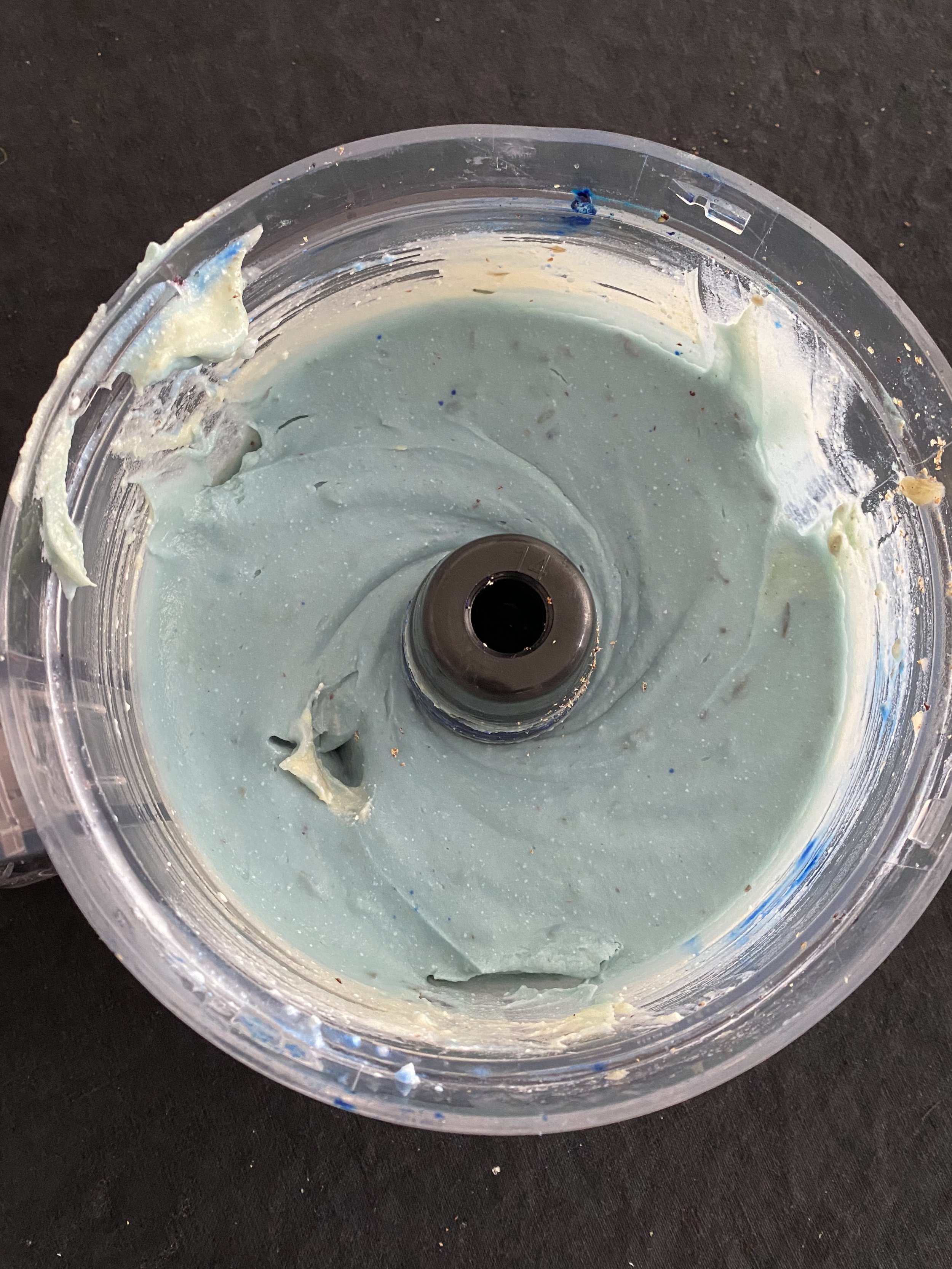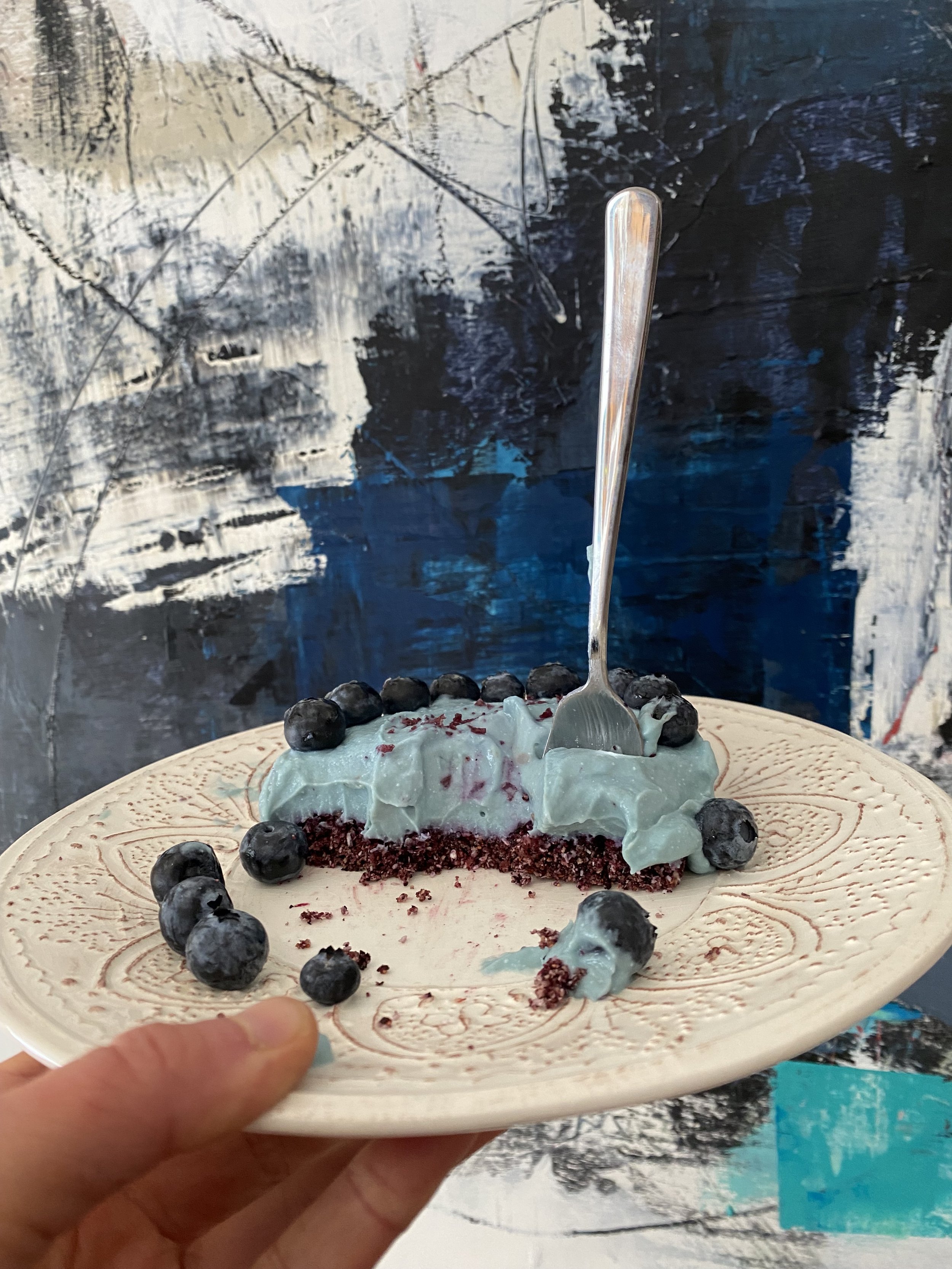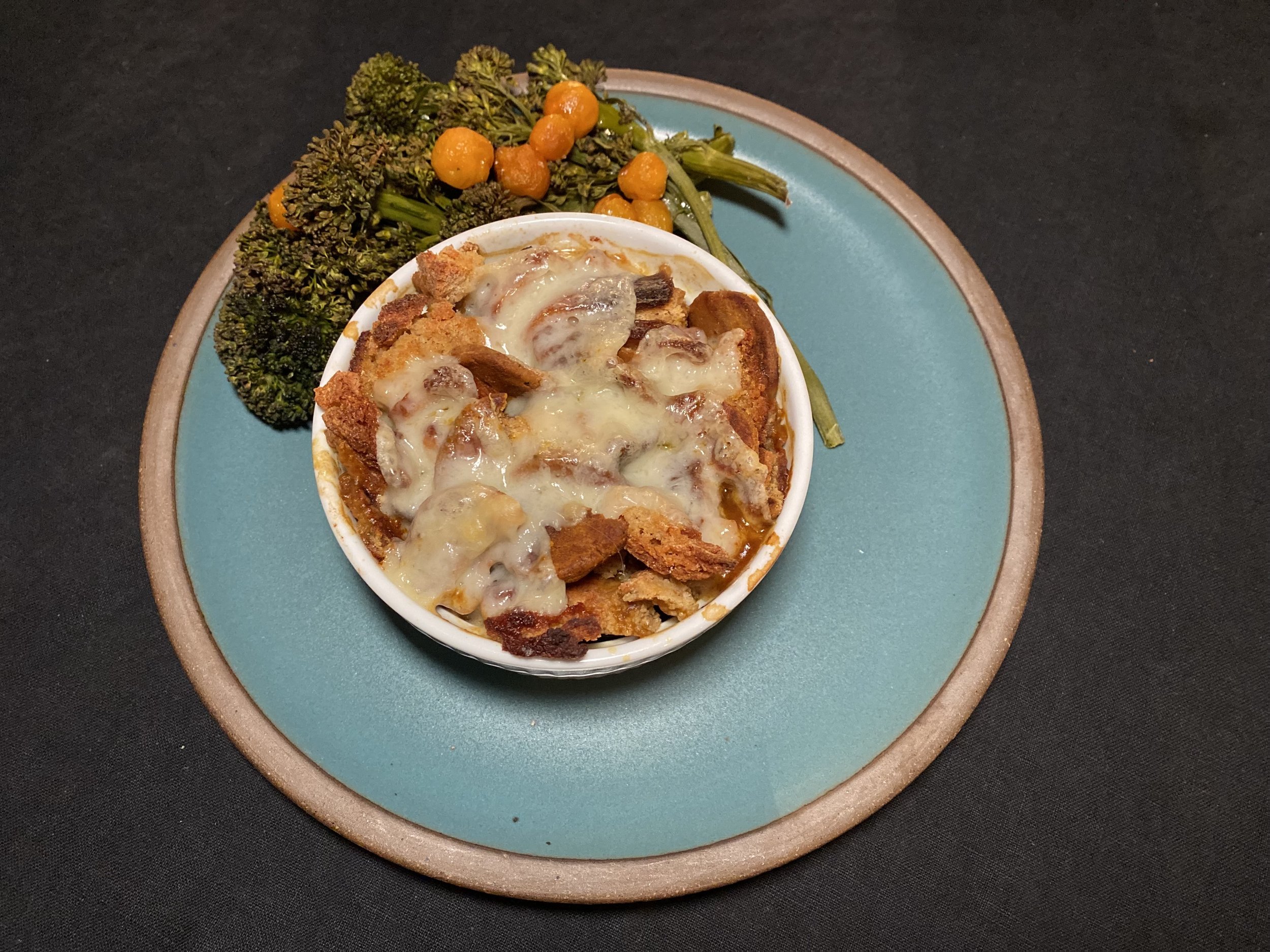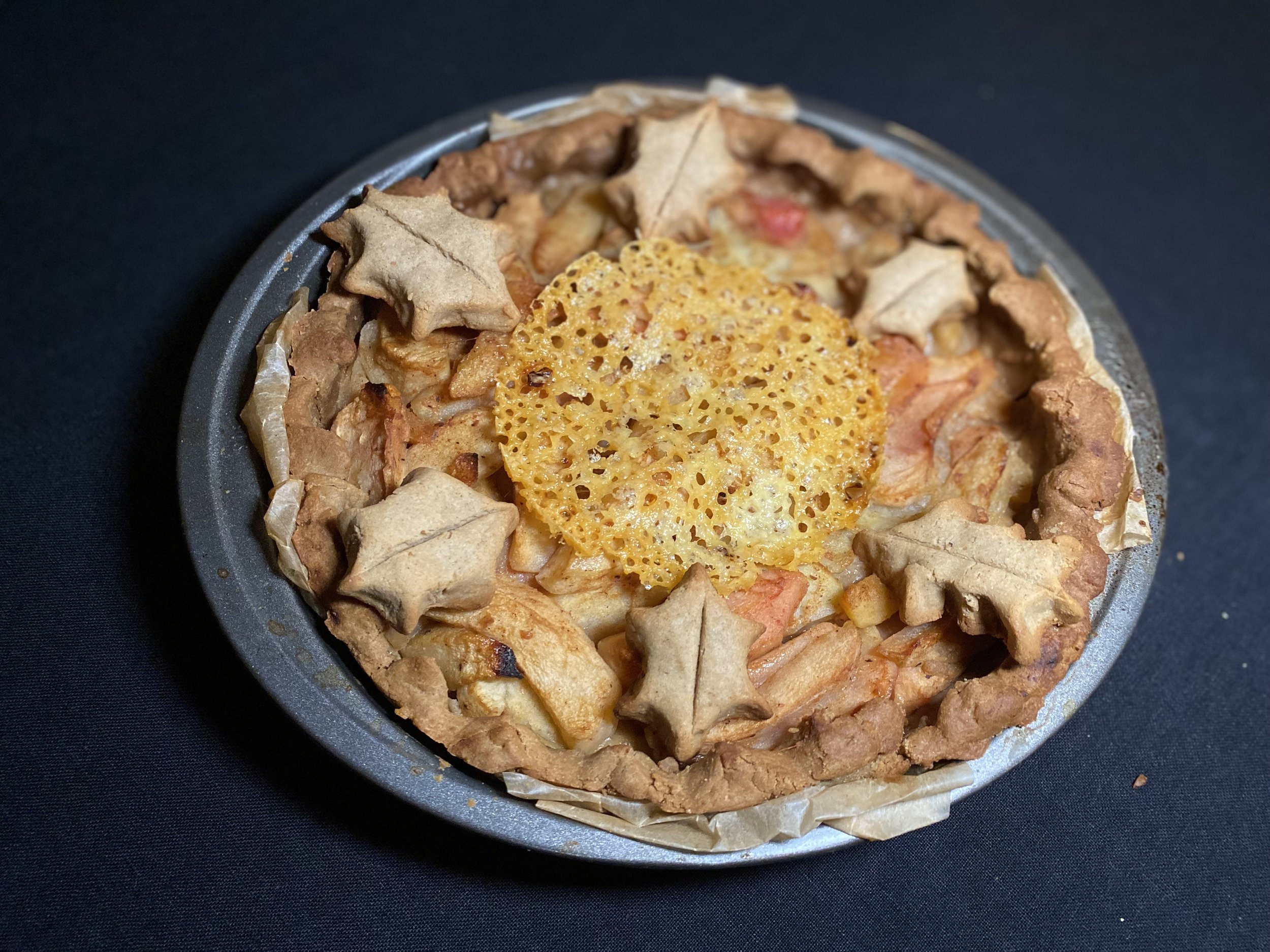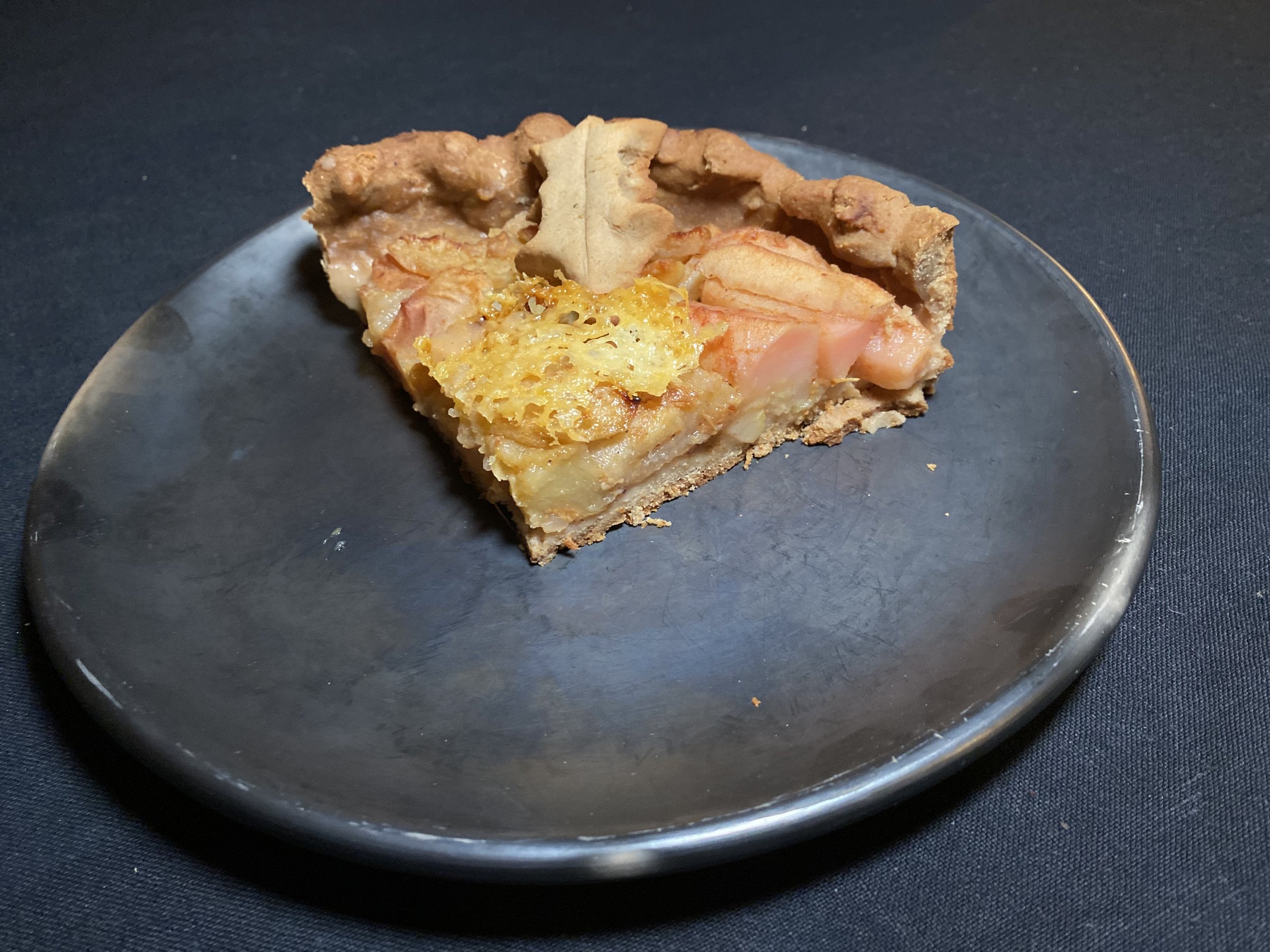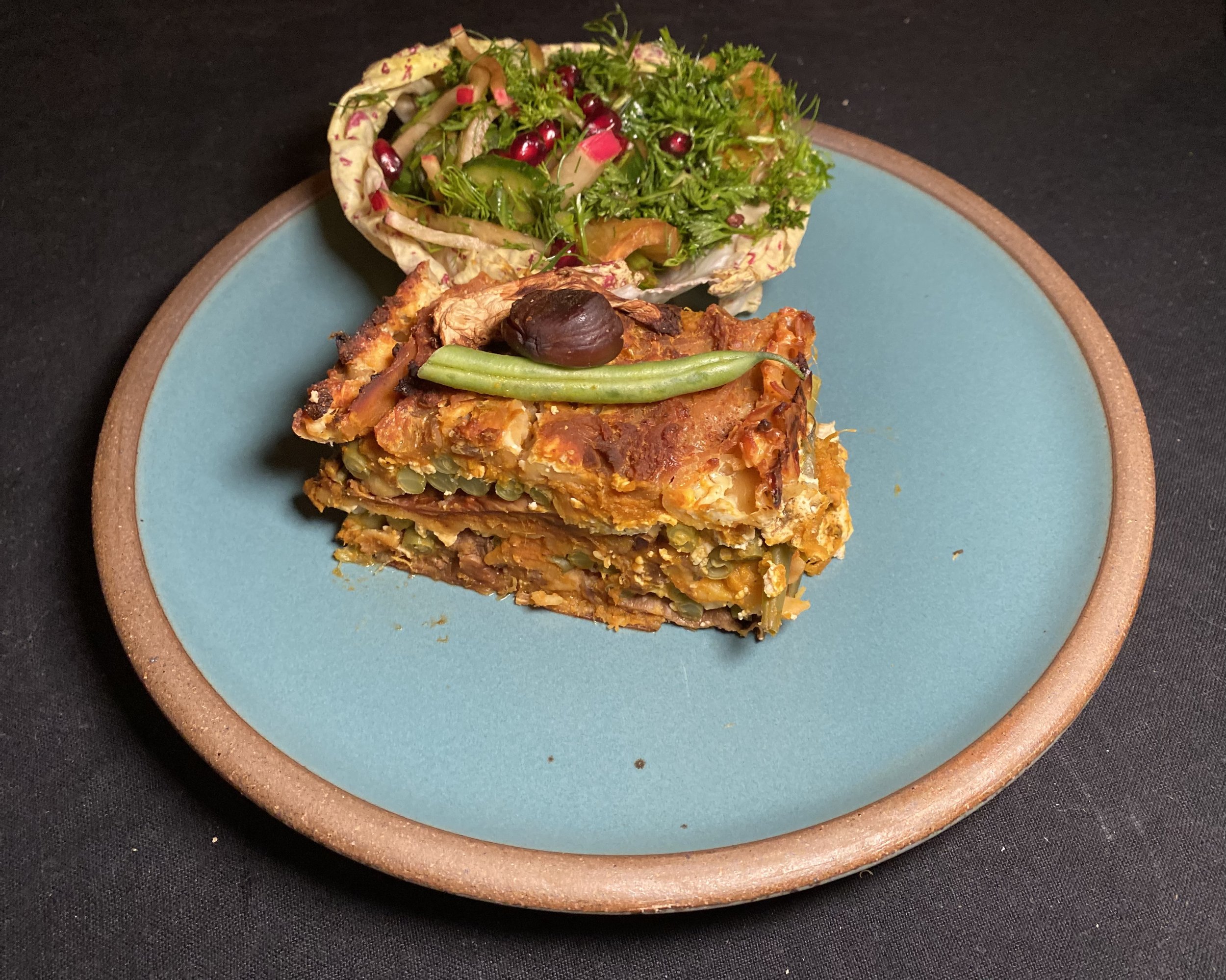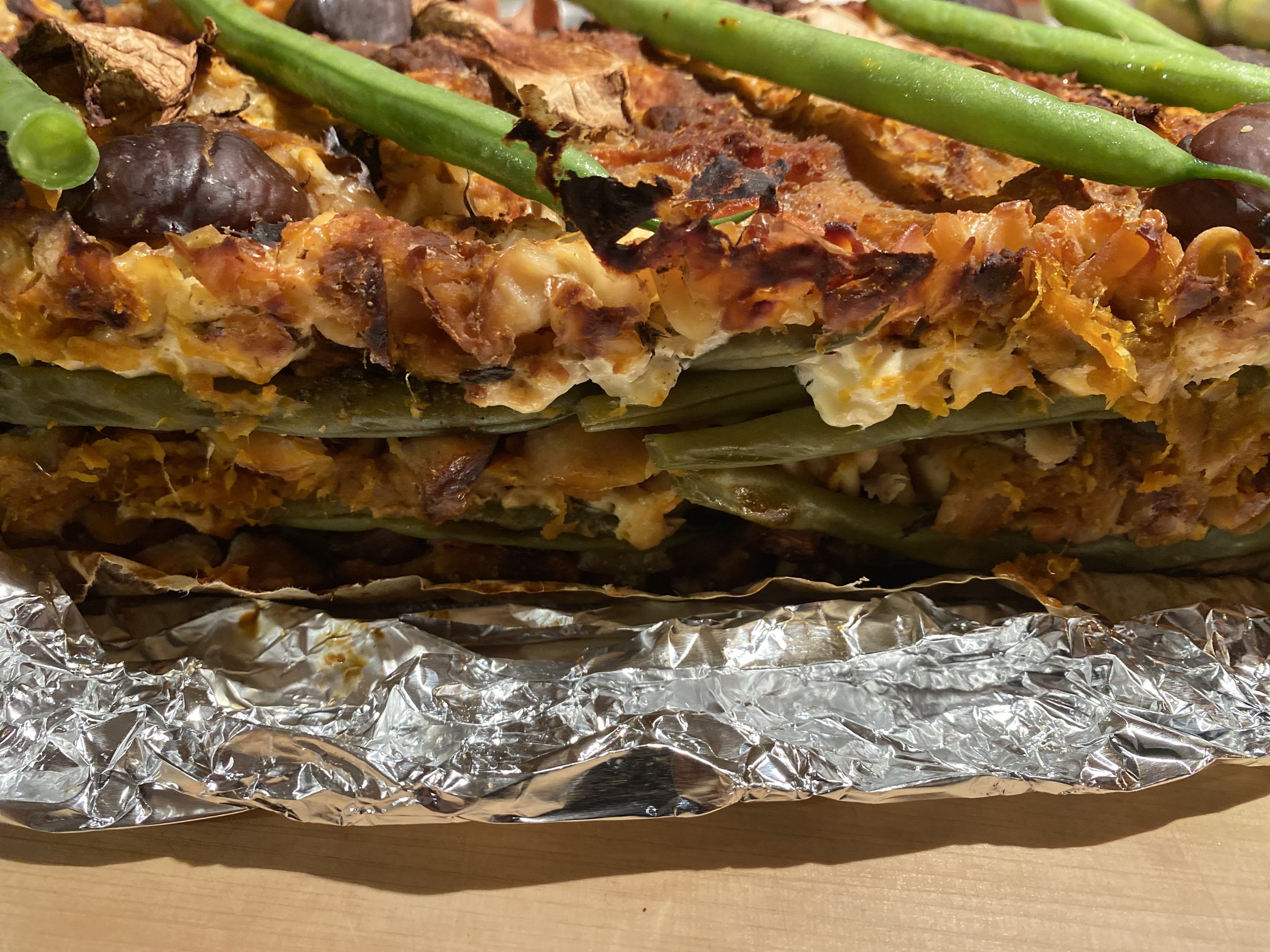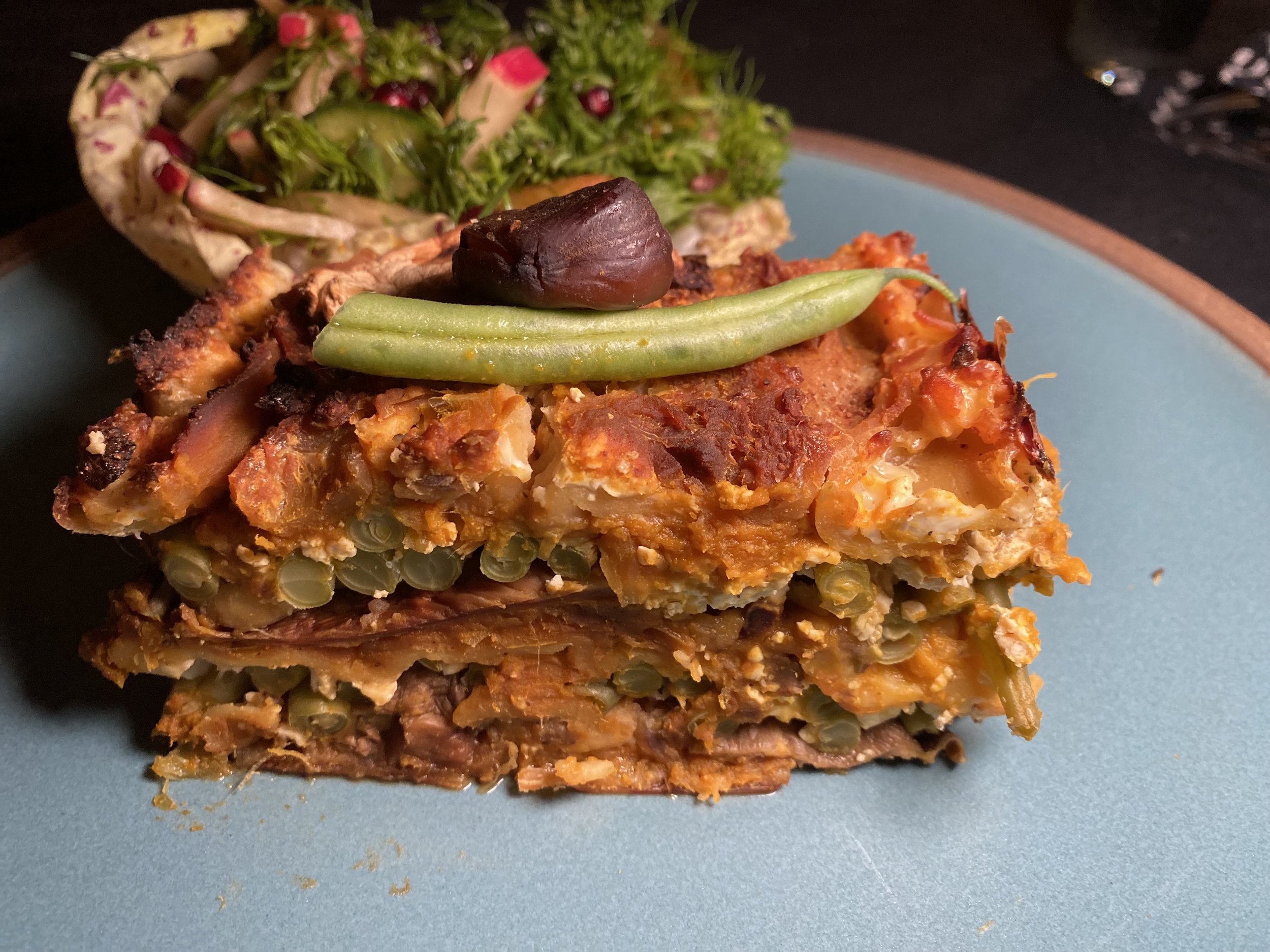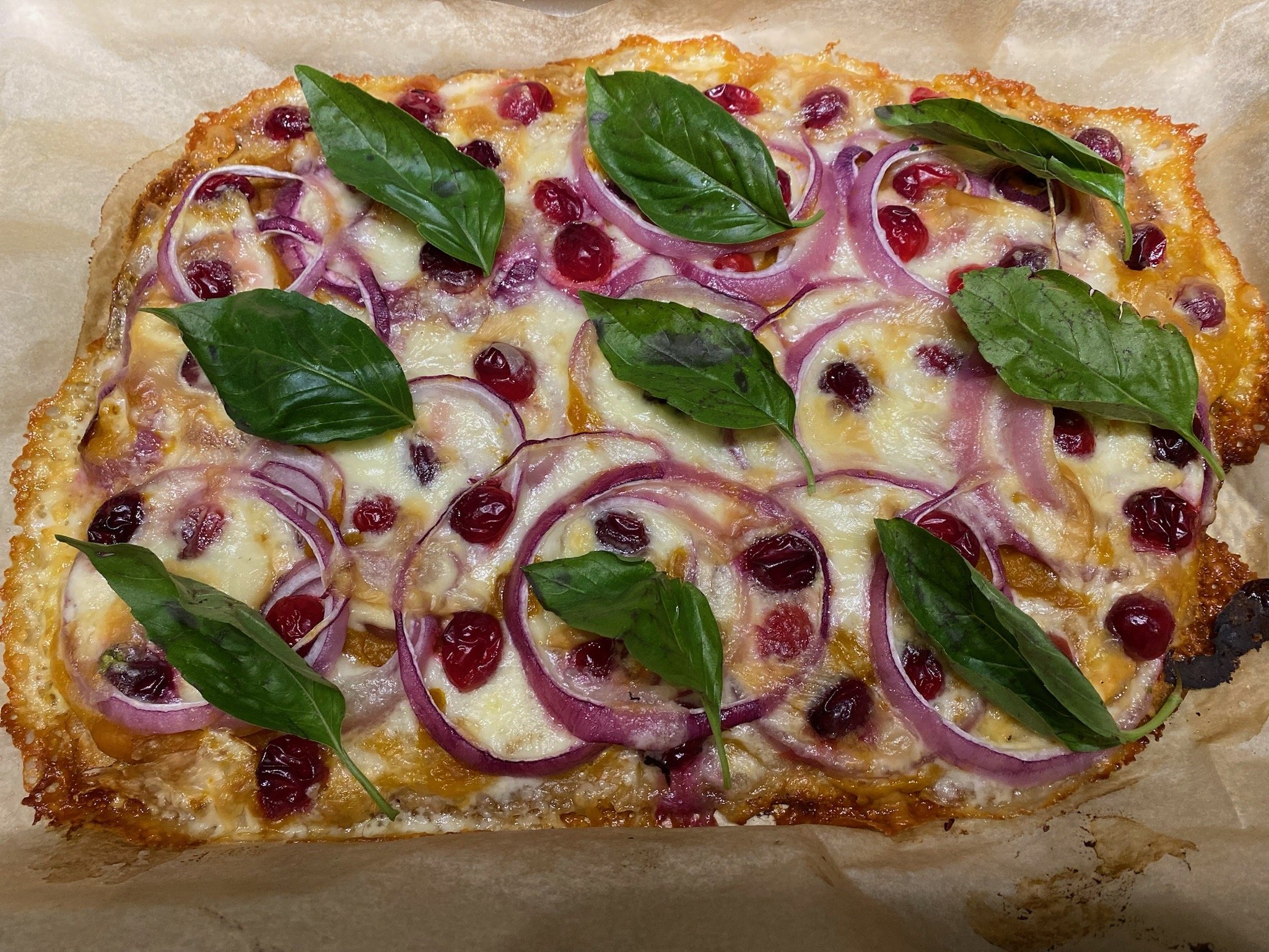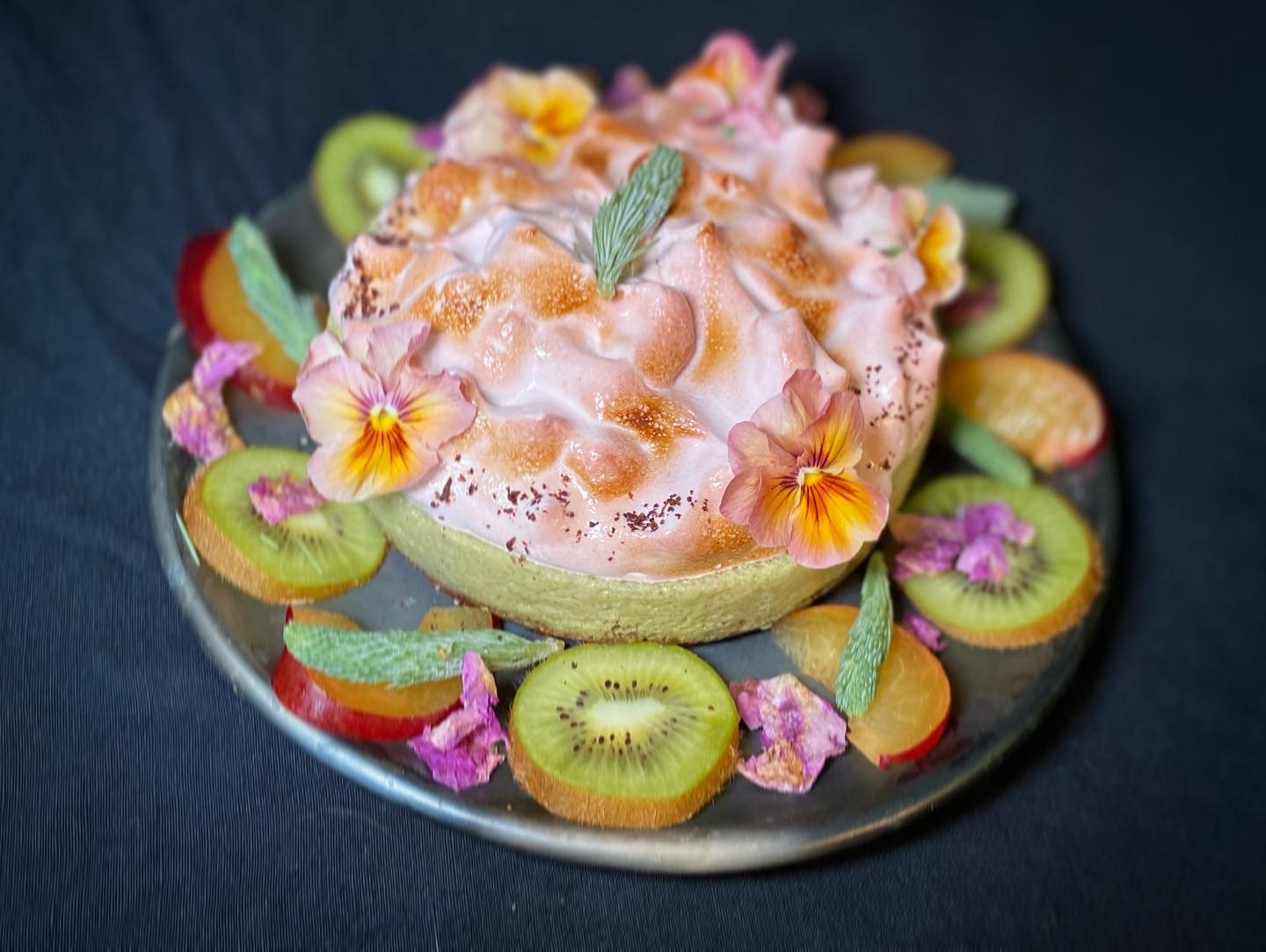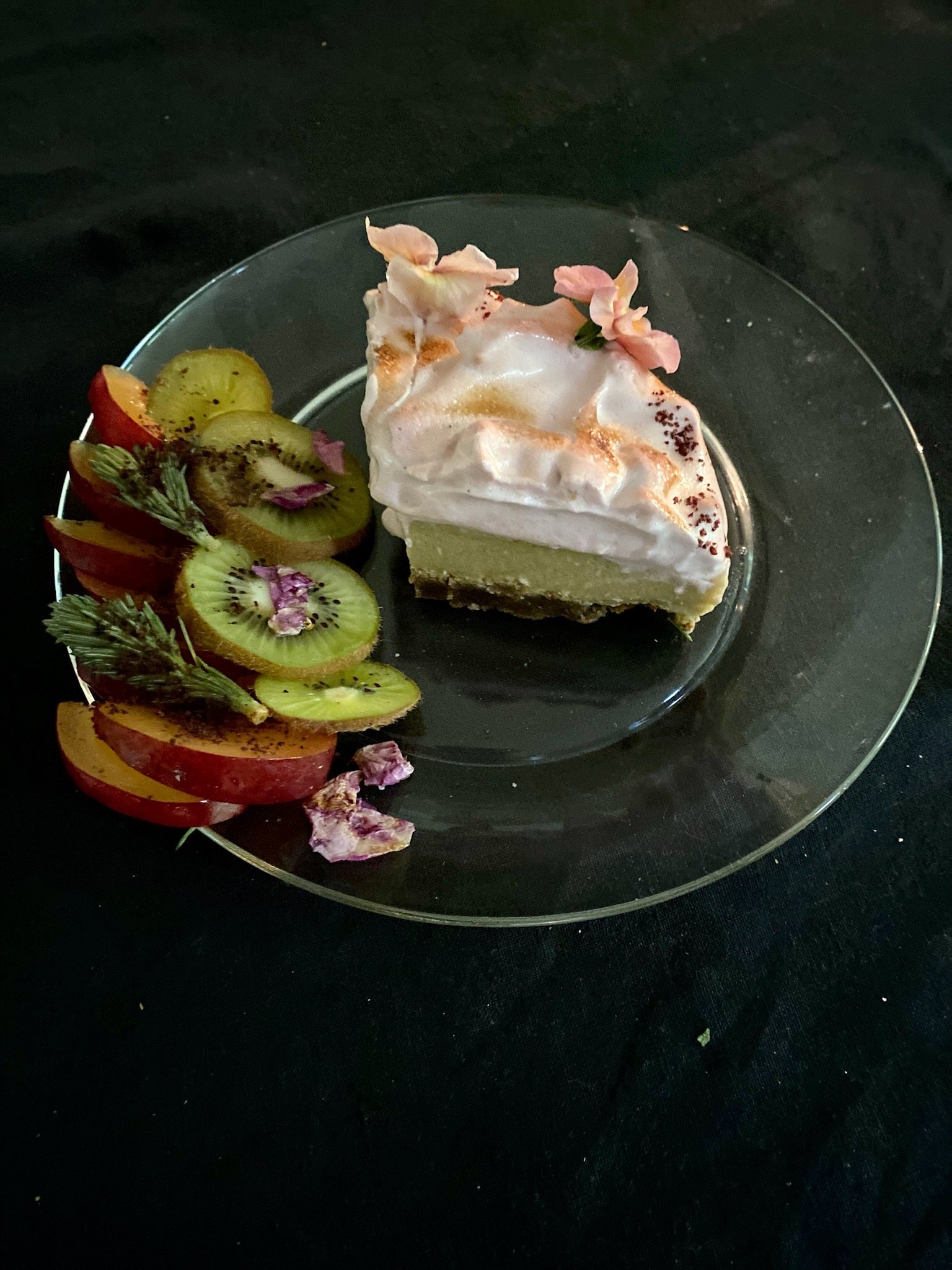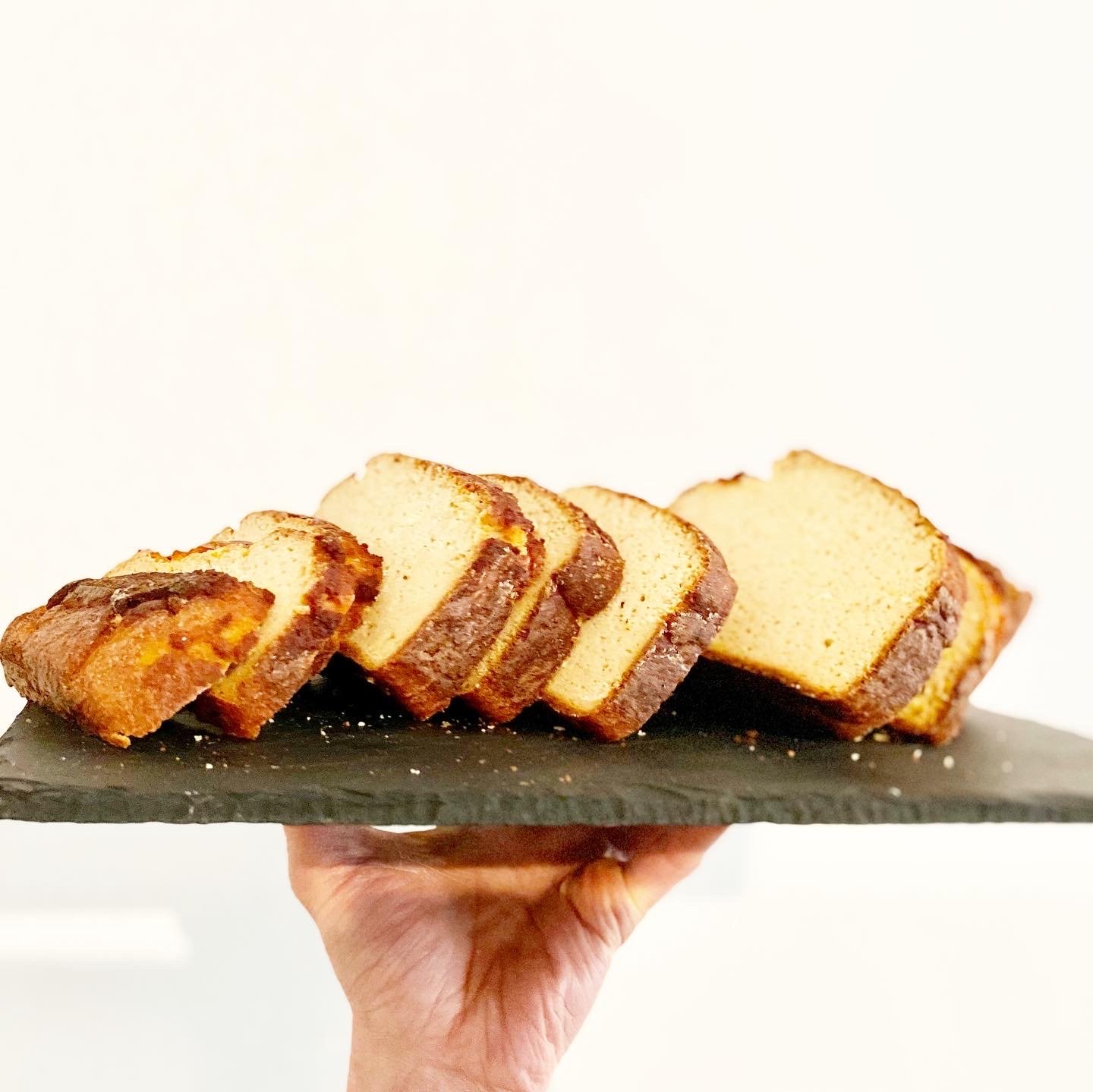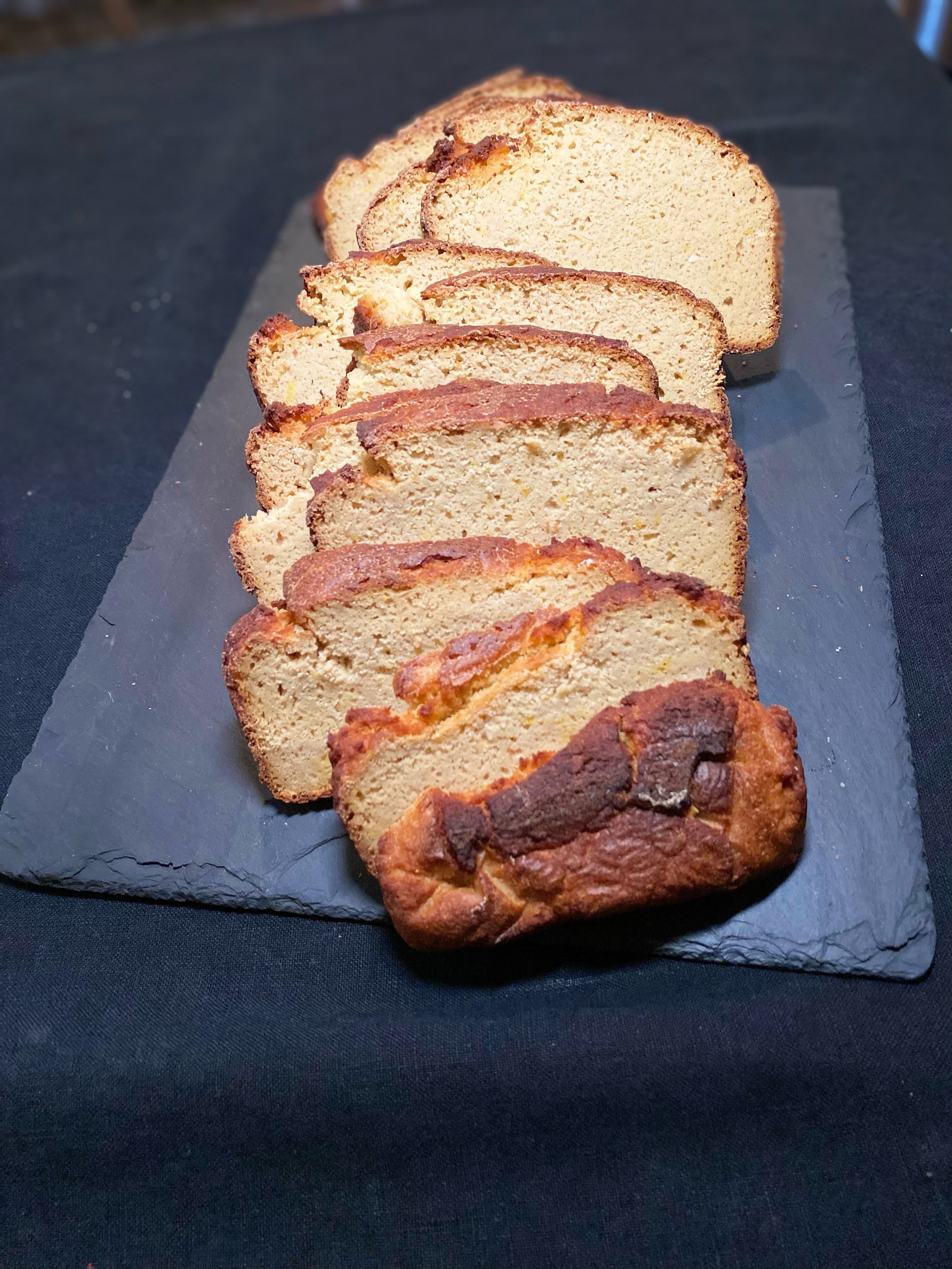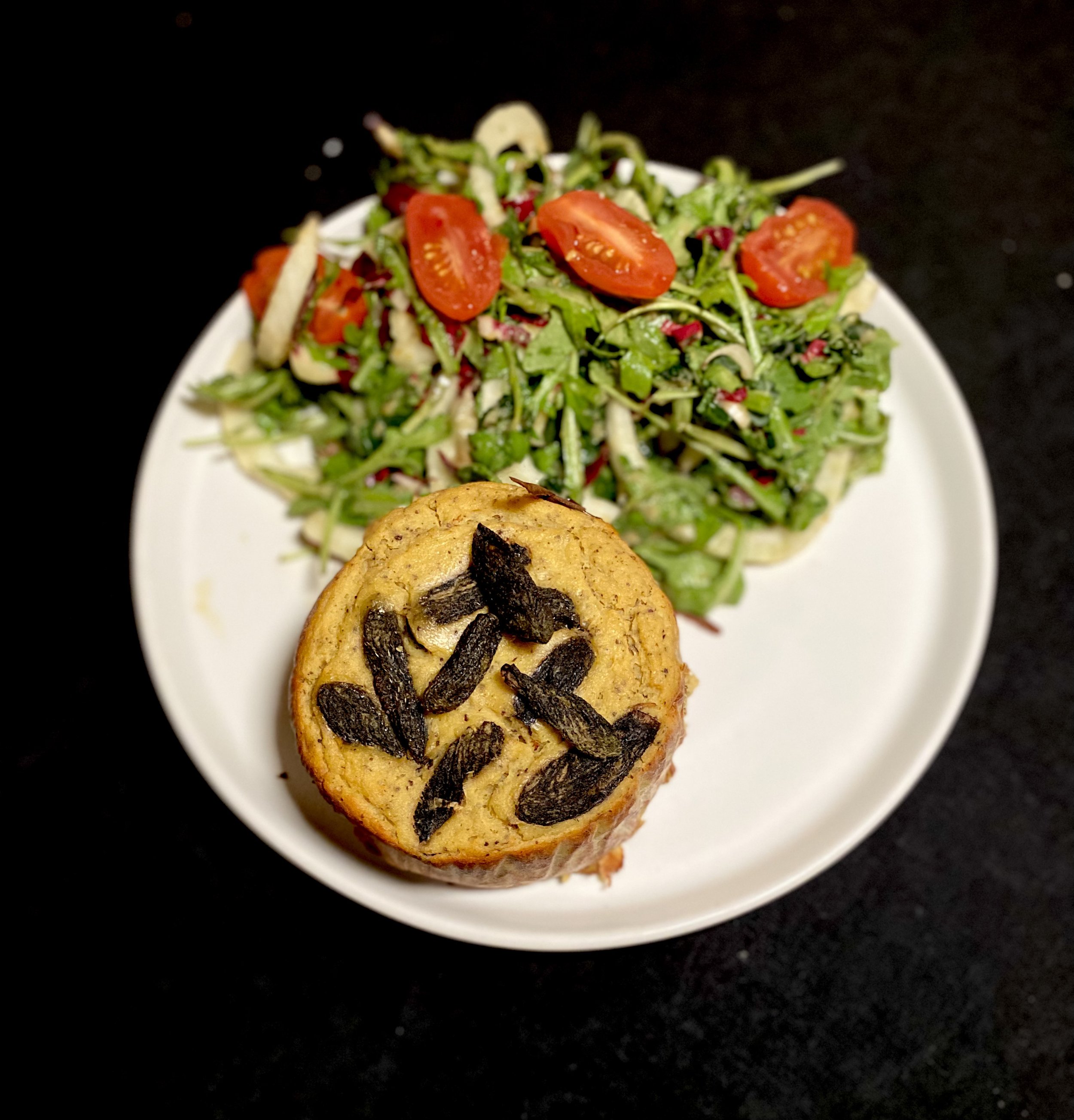[Note that this was all dictated, so please excuse typos.]
Stop. Rest. Pace.
This phrase has become my necessary daily practice as someone with severe Myalgic Encephalomyelitis (M.E.).
I used to bike to the gym at 5 AM with three changes of clothes, my lunch, a pair of high heels. I’d then bike from the gym to work, where I’d often put in an exuberant 10-13 hour day, bike home, do yoga, make music or art, cook dinner. Then I would do it all again the next day.
I did not stop. I barely rested. I did not need to pace. Or, I did not think I did. I would have frequent episodes of systemic pain, crashes of extreme fatigue, daily discoloration of my limbs, burning and swelling in my feet each night, dizziness, and other strange symptoms. After a decade plus of dismissal by many clinicians, I determined this was nothing to worry about. I would just keep going on, pushing through. Little did I know I was in a push-crash cycle invisible to those around me, and even to myself.
My ability to keep momentum with the life I had been living changed dramatically in 2020 when a viral infection, then infection with COVID-19, then bacterial infection, all in close succession, caused a progressive decline in my health, and eventual diagnosis with M.E.
At first, I refused to accept this diagnosis. I kept going, kept doing, without stopping, without resting, without pacing. Clinicians and loved ones even endorsed doing more…maybe increasing activity would lead to improvement... maybe I was just 'anxious' and doing more of what I loved would help me 'feel better.'
Instead, I kept declining. The visual reality of my illness became undeniable with near constant red and purple hands and feet, pupils of different sizes, massively bloated abdomen, unwanted and rapid muscle wasting and weight loss.
The reality of M.E. and me with M.E. is that there is no cure, not even FDA approved treatments, little physician education and even less meaningful research.
My care team cares. Together we have tried everything, sometimes taking big risks to trial the most experimental potential approaches. We have put my body on the line to travel for out of state and out of pocket opinions. Nothing was systematically effective. Some trials made me significantly worse. Only 4% of people with M.E. recover, and most of those do so early in disease trajectory. We were now able to trace some of my mild symptoms back at least to 2010.
Soon, I became housebound, then largely couch/bed bound. This puts me in the 25% most severe of M.E. patients. But the vast majority, a mind boggling 75%, are entirely unable to work.
Now, following exertion of any kind (cognitive, emotional, physical), I experience episodes of profound worsening of my baseline constant symptoms. This worsening is called Post Exertional Malaise. Each M.E. patient has different experiences of PEM. And each episode can be quite unique; the unpredictability itself a challenge. In PEM I have the feeling my body is paralyzed and I am locked out from my brain. My vision blurs, ears ring, my body feels tied to a cement block. My head becomes too heavy to hold up. My skull feels too small for my throbbing brain. My neck becomes palpably swollen and hot. My lungs feel unable to gather oxygen.
I am a body on fire: every nerve fiber raging. And yet, I feel unable to move, and sometimes even speak.
Doing anything: drinking water, watching or reading, interacting with someone, even to tell them what I need, can feel impossible in these moments. And when these episodes recede, which can take days or weeks, I still experience symptoms in each moment. And each episode has the potential to permanently cause a worsening of my baseline tolerance for exertion.
Now every action I take requires evaluation: how will this impact my body? how much energy does it take? This includes what might seem insignificant: reading or watching anything, talking on the phone, resting in the bright sun, lifting a piece of kitchen equipment, hearing the loud sound of a coffee grinder or blender...
Now I must Stop. Rest. Pace.
It’s not a choice. My body enforces it. Sometimes if I don’t, I have a ‘sleep attack’ — becoming suddenly unable to keep my eyes open.
But I do try my best to do what I must to survive, to prevent worsening. I do try to Stop. Rest. Pace.
First before I do anything, I stop. I try to visualize the action and its impact. I imagine how to cut out excess energy expenditure (physical, emotional, cognitive), and I evaluate what kind of rest I might need before and after. Then, after I do something, I rest, often in a 1:1 or 2:1 ratio of rest to activity, both in time and intensity. This is how I pace.
Note: Lots of great resources about pacing exist. My favorites are the ones from the Bateman Horne Center. And ME & More’s quick guide.
I don't always get it right. But the reality of M.E. is that signs of overexertion can take as long as 72 hours to appear as PEM.
What I have learned from my years of pushing through is that rest is essential. Now rest is nonnegotiable. My body enforces it even when I have not appropriately done so.
This recipe is inspired by the need we all have for rest in our lives. Our fast-paced, productivity-driven world tells us that our worth is not in being, but in doing. Rest offers a space to truly be. It is a powerful form of resistance to the power structures that push us beyond sustainable limits.
Chamomile has a long association with rest. This recipe produces a lovely blue shortbread with relatively minimal effort, and perhaps, with a cup of tea, invites a pause, and an opportunity to reflect on what rest means to us.
Rest is a bit different for me as a person with M.E (PwME). In fact the only real treatment for M.E. flares is aggressive rest. Aggressive rest is not scrolling social media endlessly or binging episodes of your favorite show or even reading a book. Aggressive rest is not a beach vacation or a long nap. Aggressive rest is extreme withdrawal from all activity, often entirely flat, without sensory input of light or sound. This is not a pleasurable kind of rest, but a physically necessary one.
Recipes usually appear as a set of steps without any breaks, without any rest for the cook. Perhaps this is why they can feel so intimidating: the cook is supposed to battle through chopping, stirring, plating without pause. The effort isn’t over at the end of cook time. After wrestling the written recipe into some sort of reality, the cook is left with the spoils of this war—a pile of dirtied pots, pans, and utensils, and perhaps a stained shirt, and sweaty forehead in need of a shower.
For PwME and other energy limiting conditions, cooking can be an actually impossible task. For those who do have capacity to cook, using energy in this way can cause symptoms that make it especially overwhelming, and frankly, unsafe. This is not the battle of the day that a PwME would choose to fight.
Recipes rarely acknowledge the physical exertion of cooking and almost never acknowledge the physical labor of cleaning up. I am gradually, with much trial and unfortunate error, learning how to limit my energy expenditure in cooking. And, I hope to continue to share information about M.E. alongside useful kitchen approaches here and in other spaces where I write about food. Note that most of my ‘writing’ these days is mostly dictation, done from fully flat on the couch, in short spurts.
I desperately love to cook. And, truthfully, I sacrifice using my physical and cognitive energy in other ways so that I can continue to, with much restriction and restraint, enjoy the pleasure of creating something nourishing to share that cooking represents for me.
So, before you make and consume this shortbread, I have a request. Would you please stop first? Envision making the shortbread from start to finish. Read the recipe in its entirety (a good practice generally!). Attend to the pacing described. Imagine enjoying the shortbread. Contemplate what you will do— or more aptly not do— after cooking and consuming. Consider, is this a meaningful way I can use and share my energy with myself or others? Will it bring me joy greater than the output it takes to create?
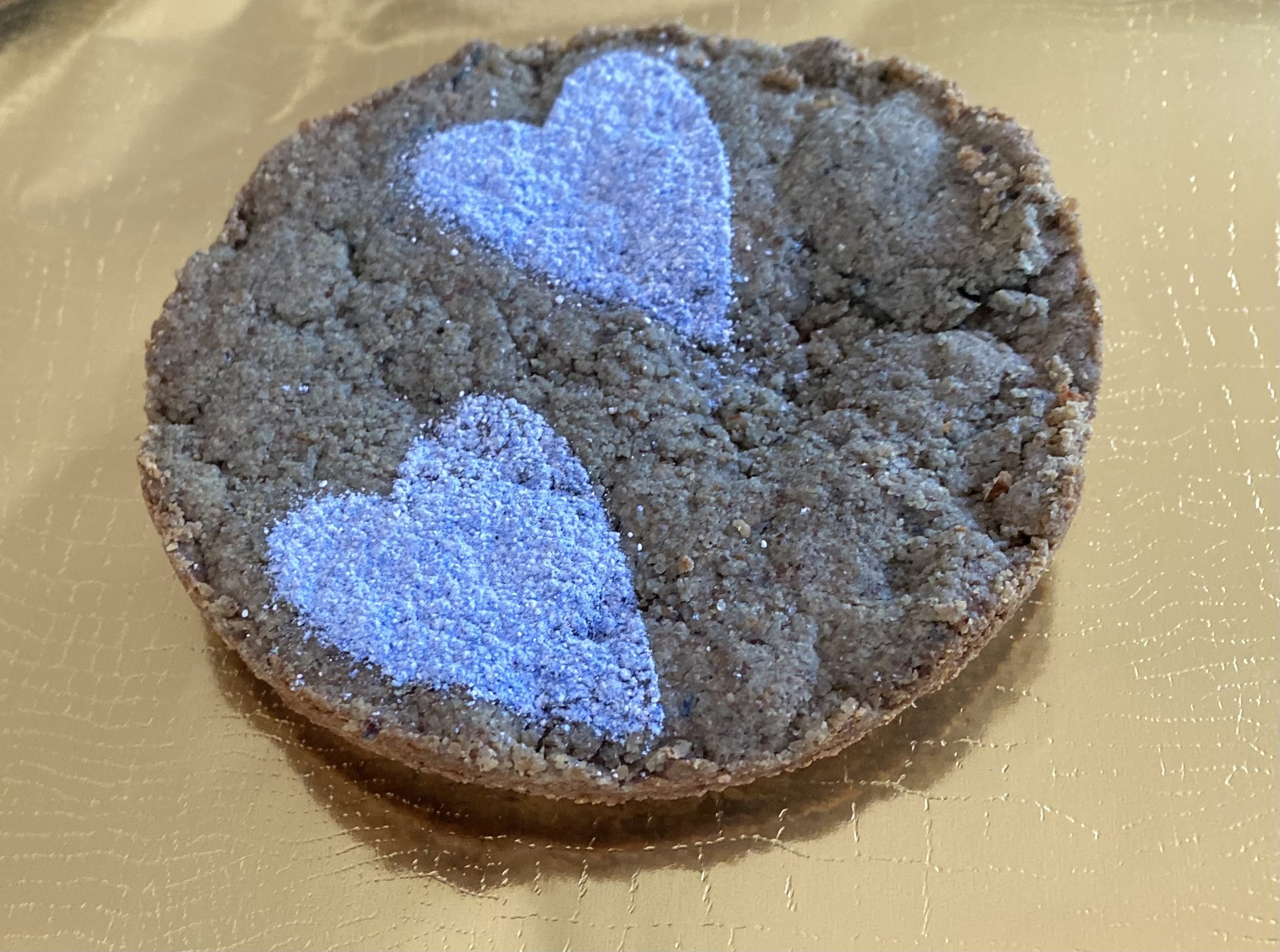

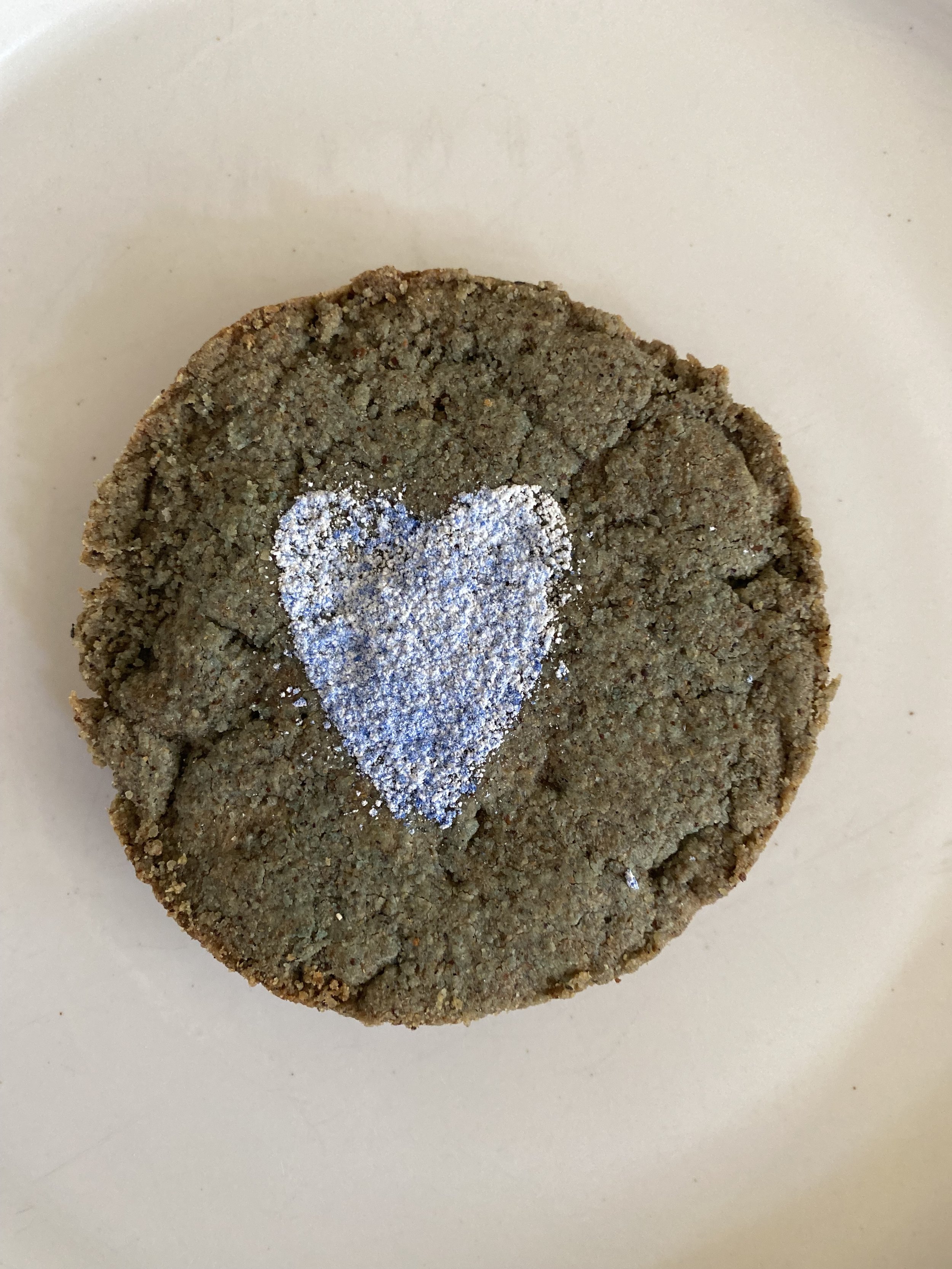

Blue Chamomile Shortbread
Makes 6 four inch round springform pans or one 8 x 8 inch pan
Upright time: approximately 30-40 minutes broken into 5-7 minute chunks
Ingredients
2 cups gluten-free flour blend of your choice
2/3 cup granulated sugar
2 tablespoons dried chamomile flowers (about two teabags worth)
1 teaspoon blue spirulina (optional, for color only)
pinch nutmeg
½ teaspoons salt
13 tablespoons cold unsalted butter (if vegan use this brand) plus a bit extra for greasing pan
Optional powdered sugar and extra blue spirulina for decorating
Method
Line 6 four inch round springform pans or one 8 x 8 inch pan on bottom with parchment and grease sides. Parchment can be cut seated or lying down (upright time 5-7 minutes).
Remove butter from fridge and cut into one inch cubes. If not using immediately, put cubes back into fridge and rest (upright time 5 minutes).
Preheat oven to 325F and rest while it preheats (upright time 5 minutes).
Note: step involves loud sound. In a food processor, pulse together all ingredients except butter. Add in butter cubes and pulse until well-blended and mealy and balls start to form (upright time 5-7 minutes). Rest the dough and yourself. Can sit on the counter for up to 5 hours or overnight, covered in fridge (the dough that is, not you!).
Press dough into lined pans. And put into preheated oven (upright time 5-7 minutes).
Cook for about 20 minutes until lightly browning at edges. Remove from oven and let cool completely before removing from pans (upright time 5 minutes). Can be stored countertop in an airtight container for 2 days or frozen indefinitely.
Note: to create designs on the shortbread, cut out shapes from parchment and sift together extra spirulina and powdered sugar over parchment.
I want to offer some additional thoughts on clean up. Parchment lining is such a helpful strategy. I have an Amazon subscription to precut unbleached parchment sheets. I use multiple each day as I cook most meals on baking sheets (I’ll describe this energy saving strategy in a future post). It allows for less scrubbing, and honestly, the sticking of food is often the downfall of a recipe, or at least its pretty plating. In this case, parchment allows for the shortbread to release with ease from the pans and the pans can be put directly into the dishwasher. This recipe intentionally builds in quicker clean up— so don’t skip the lining step!

